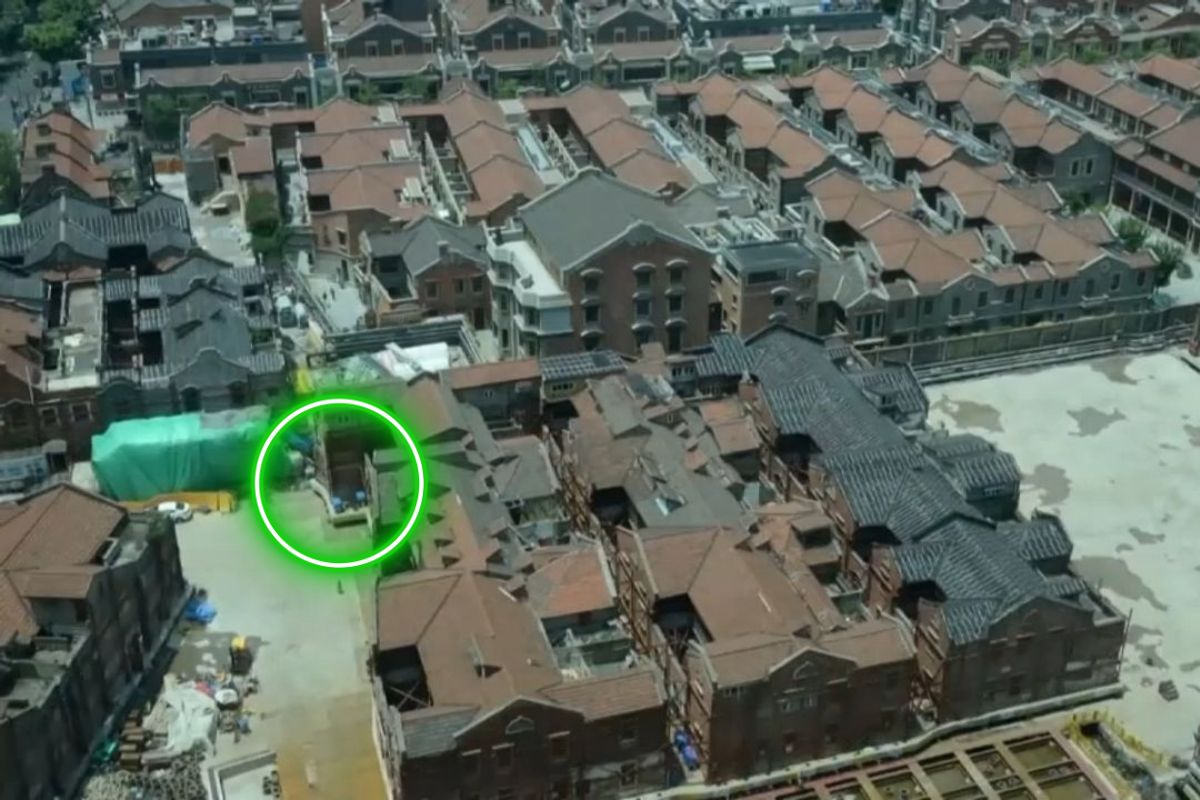Show table of content Hide table of content
Shanghai has once again demonstrated China’s engineering prowess by completing an extraordinary feat: moving an entire historic district weighing 7,500 tons using 432 specialized robots. This remarkable achievement, carried out in the heart of the bustling metropolis, showcases how advanced technology can preserve cultural heritage while accommodating modern urban development needs.
Engineering marvel: how 432 robots transported a 7,500-ton historic building
In an unprecedented demonstration of technological innovation, Chinese engineers deployed a fleet of 432 walking robots to relocate an entire historic building complex in Shanghai. The Huayanli complex, located in the historic Zhangyuan neighborhood, dates back to the 1920s-1930s and represents a valuable architectural treasure that blends European and Chinese design elements. With a footprint of 4,030 square meters and weighing approximately 7,500 tons, this massive structure presented a monumental challenge.
Unlike traditional building relocation methods that utilize rails, cranes, or rollers, Shanghai opted for a revolutionary approach. Each of the 432 robots functioned as an intelligent mechanical “leg” equipped with sophisticated sensors and shock absorption systems. These robots coordinated their movements with remarkable precision, advancing approximately 10 meters daily while supporting the enormous weight of the historic complex. The robotic system demonstrated exceptional adaptability in navigating the narrow, winding alleys characteristic of Shanghai’s old districts where conventional heavy machinery would be impossible to maneuver.
The scale of this project makes it the most complex building relocation ever attempted in China, considering the combination of weight, surface area, and urban density factors. “Ambitious restoration projects often face unexpected challenges,” notes one engineer involved, “but our robotic system was designed to handle even the most delicate structural elements without damage.”
This temporary relocation became necessary to facilitate the construction of a three-level underground hub beneath the original site. The subterranean complex will eventually house 53,000 square meters of commercial and cultural spaces, a parking facility with over 100 spaces, and a transportation node connecting Shanghai metro lines 2, 12, and 13. Once the underground construction is completed, the robots will perform the equally challenging task of returning the building to its original location.
Artificial intelligence powering Shanghai’s underground development
The transportation of the building represents only one aspect of this technological tour de force. Beneath the surface, intelligent drilling robots navigated spaces as narrow as 1.2 meters, excavating foundations while carefully maneuvering around existing walls, staircases, and thresholds. These machines employ deep learning algorithms that enable them to distinguish between clay and rock layers, preventing sudden movements that could jeopardize surrounding structures.
The entire site was digitally mapped using Building Information Modeling (BIM) and 3D point cloud scanning techniques. This comprehensive digital twin allowed engineers to anticipate obstacles, plan transportation routes, and design curved pathways for debris removal with millimeter precision. The integration of AI and robotics in this project echoes other extraordinary technological applications seen in challenging environments, such as when scientists utilize advanced equipment in extremely hazardous locations.
Science This strange red lake in Tanzania turns animals to ‘stone’.
For debris evacuation, engineers implemented an innovative chain system resembling industrial logistics operations. Motorized conveyor belts, rail-mounted hoists, and automated hoppers worked in harmony to transport excavated earth through the confined underground space. This sophisticated solution minimized surface disruptions, eliminated the need for constant truck traffic, and maintained continuous efficiency despite spatial constraints.
The project managers faced challenges comparable to those encountered when moving extremely heavy objects requires specialized equipment and precise coordination. Their solution demonstrates how industrial automation principles can be successfully adapted to urban construction scenarios.
Balancing heritage preservation with modern urban development
This extraordinary engineering accomplishment represents Shanghai’s commitment to preserving its architectural heritage while embracing modern infrastructure development. The Huayanli complex exemplifies the valuable shikumen style, a traditional Shanghai architectural form that combines Chinese and Western elements. Rather than demolishing this cultural treasure, authorities chose a more challenging but ultimately more rewarding path of temporary relocation.
The preservation effort stands in stark contrast to situations where property owners and developers clash over land use. Instead, this project demonstrates how technology can create harmony between conservation and progress. Upon completion, Zhangyuan will emerge as a unique urban space featuring preserved historical architecture above ground with ultramodern connectivity below, linking Shanghai’s office towers, shopping centers, and residential neighborhoods.
This approach to urban development has attracted international attention. While some remarkable discoveries generate scientific interest, Shanghai’s robot-assisted building relocation has fascinated urban planners and preservationists worldwide. The project demonstrates how cities with rich architectural heritage can avoid the binary choice between preservation and development.
The robotic building transportation technique could revolutionize urban renewal projects globally. Cities facing similar challenges might now consider preserving structures once deemed impossible to save. However, the specialized technology remains costly and requires significant expertise to implement safely. Just as unexpected discoveries can change our understanding of what’s possible, this engineering achievement has expanded the horizons of urban preservation.
Shanghai’s achievement demonstrates that even the most seemingly immovable obstacles can be overcome with innovative thinking. The city has effectively shown that unexpected situations requiring creative solutions, like when unforeseen events disrupt normal operations, can lead to remarkable breakthroughs in how we approach urban development challenges.


